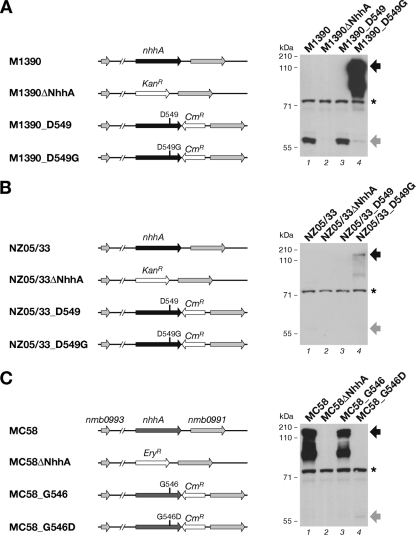Fig. 3.
The Gly-to-Asp substitution affects NhhA trimerization. Shown is the genetic organization of the nhhA loci of the wild-type, NhhA deletion mutant, and recombinant strains in the M1390 (A), NZ05/33 (B), and MC58 (C) genetic backgrounds. To generate deletion mutants, nhhA was replaced with an erythromycin resistance (Eryr) cassette in the MC58 genetic background or a kanamycin resistance (Kanr) cassette in the M1390 and NZ05/33 genetic backgrounds. In the recombinant strains, wild-type (G546 and D549) and mutated (G546D and D549G) alleles are indicated. NhhA expression is under the control of its own promoter, and downstream of the stop codon of the coding region, a chloramphenicol resistance (Cmr) cassette was inserted for selection. Western blot analysis of each group of strains is shown on the right. Whole-cell lysates were analyzed under denaturing conditions using a polyclonal mouse serum raised against recombinant NhhA-His protein. NhhA trimer bands are evidenced at ∼180 kDa (black arrows) and monomer bands at ∼60 kDa (gray arrows). The asterisks mark a nonspecific cross-reactive band.

